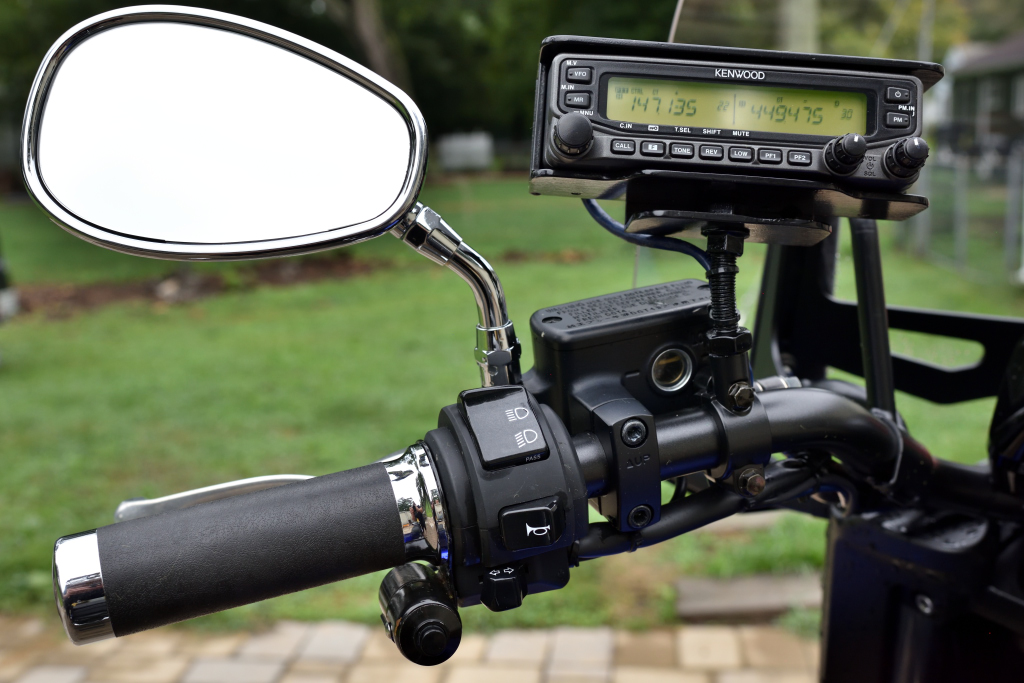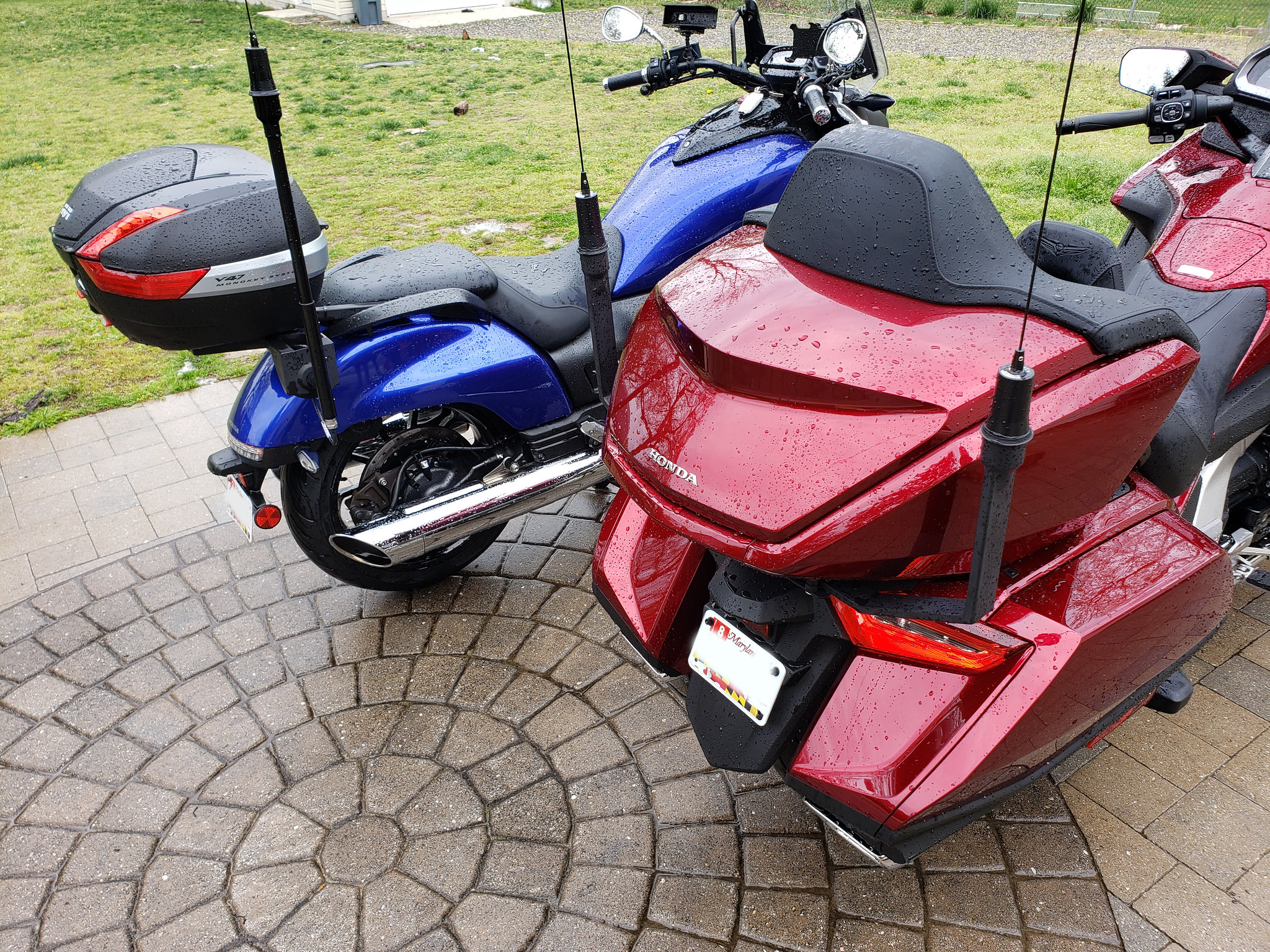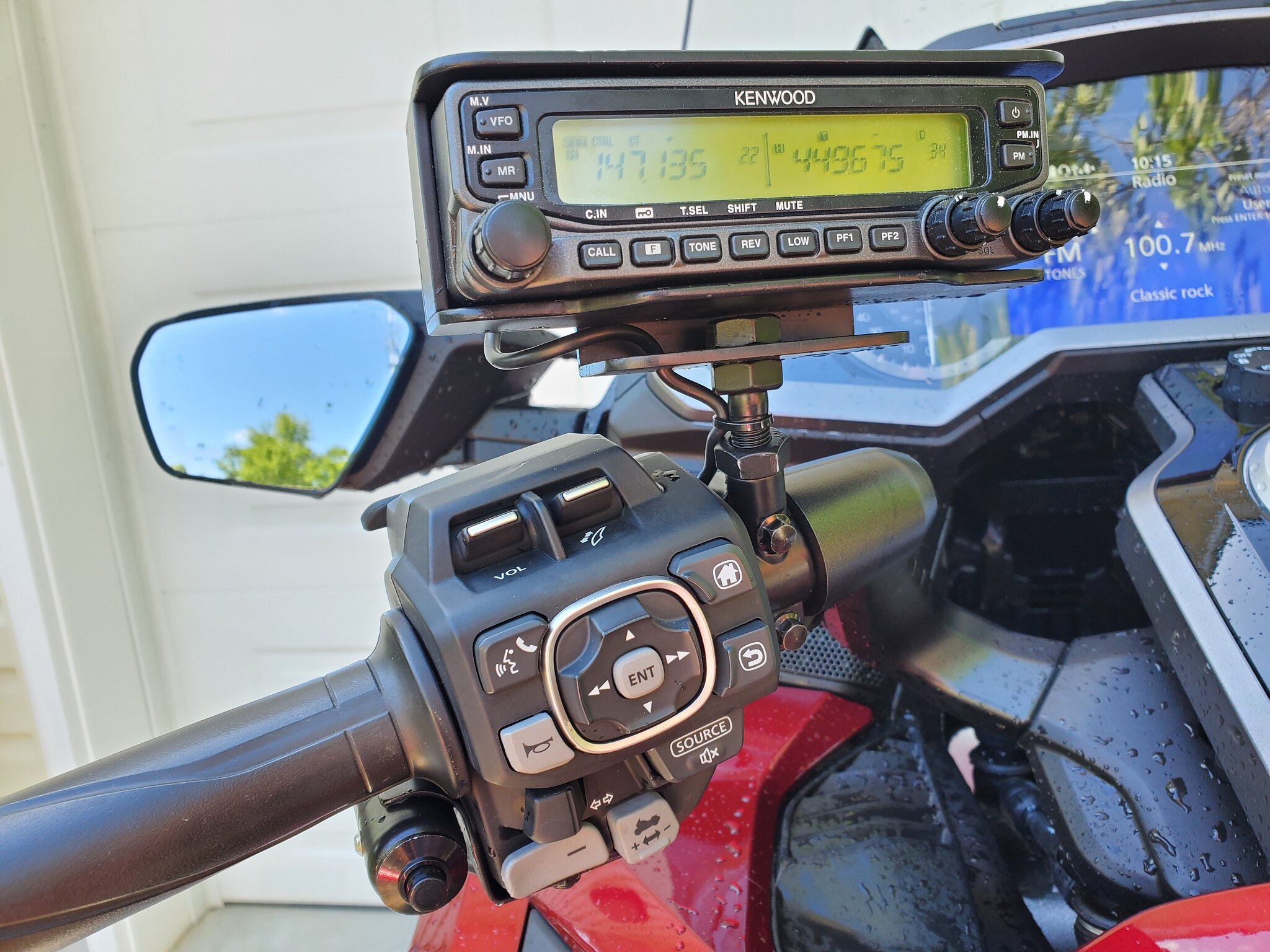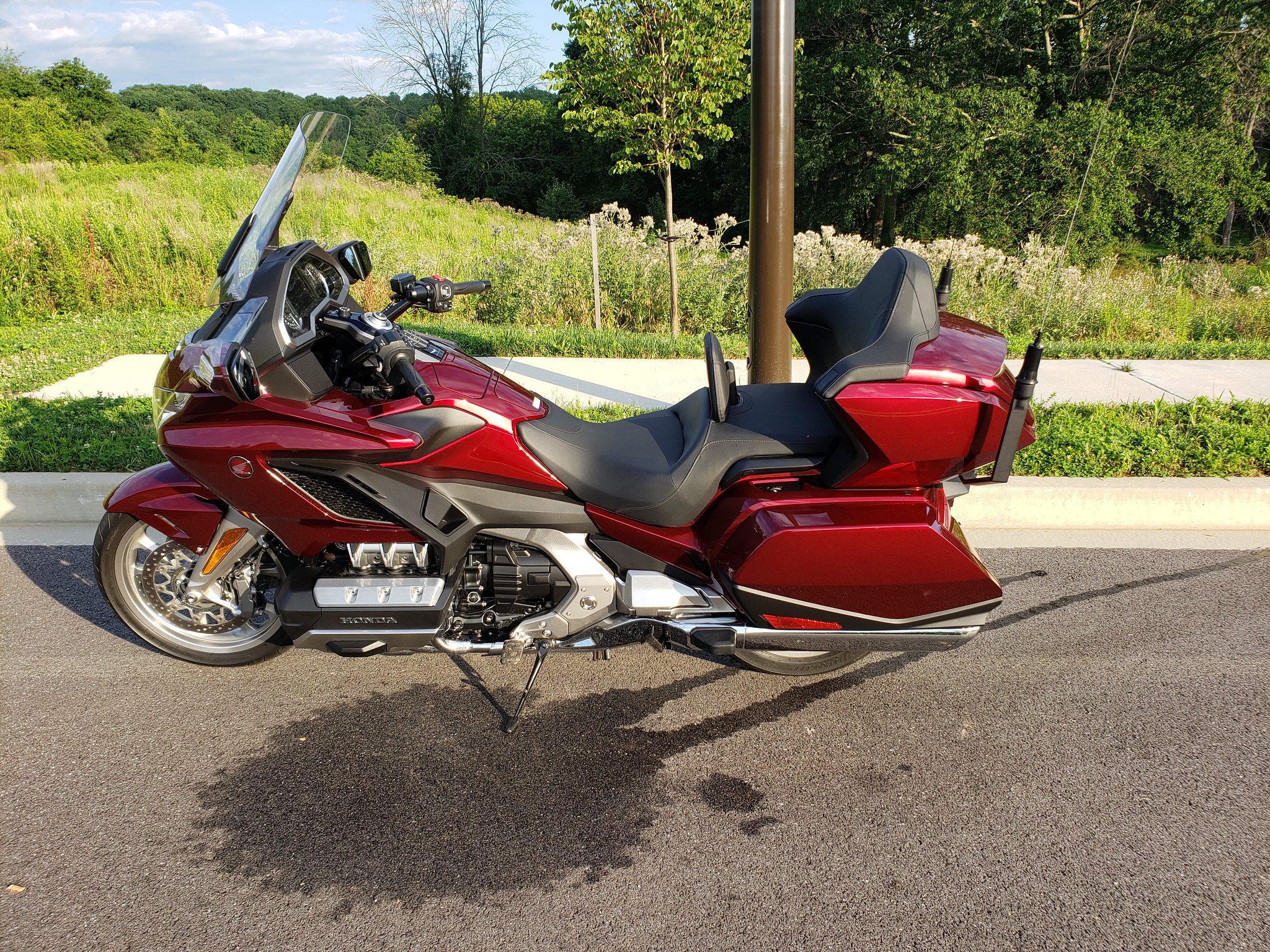
Muzic2Me
-
Posts
88 -
Joined
-
Last visited
Content Type
Profiles
Forums
Events
Gallery
Classifieds
Posts posted by Muzic2Me
-
-
I can't seem to find the exact linear angle for the Comet GP-6 Dual Band antenna? can anyone guide me to some literature on this one?
-
On 1/11/2022 at 5:38 PM, Lscott said:
A quick estimate is take the square root of the antenna height in feet and multiply by 1.4 to get the line-on-sight distance to the radio horizon in miles. In your case that works out to about 6.3 miles.
If you assume the other station is an HT held at 5 feet it’s distance to the radio horizon is about 3.1 miles.
With trees and other obstructions between the two radios your real range might be a lot less.
Through experiments your assumption is correct. I cant connect with a 50 watt base station to a HT on the car with an external antenna over a mile away. Taking the technician exam tomm. So i am hoping the 2 meter band with of course another radio and Antenna may help with the distance issue.
-
7 minutes ago, gman1971 said:
Hi there,
as gortex2 stated, cable is rather important, especially at UHF or above freqs.
Personally, I would dump the RG-8/U and go with LDF-50 1/2 inch heliax with trimetal N-connectors. BUT.... big if.... if all you are going to do is simplex then I would entertain genuine LMR600. With either silver or trimetal N-connectors, especially for indoor runs. I wouldn't waste any money on PL259/SO239 for anything above 300 MHz, it can't hold impedance well at higher freqs, so you might end up going down a very deep rabbit hole ... not fun.
Personally, I run multiple 40 foot sections of LMR600 with silver plated N-connectors for my UHF GMRS base setup (no repeater) at home. Loss is very small. For anything else I have, everything is heliax LDF-50 1/2"
The Effective Sensitivity (or dynamic sensitivity) is not the advertised sensitivity figure on the radio. In order to determine the dynamic sensitivity figure you need to perform an isotee test on the radio. Nowadays, it seems that noise floor is pretty much the limiting factor as to how far you'll be able to hear the base.
As for Antenna, after trying over two dozens of ham grade stuff, I wouldn't waste my money on anything vertical, go straight to either a half wave dipole or a half wave folded dipole. You will not be disappointed.
G.
Thanks for all the valuable experience and knowledge. Question?.. On this larger Coax, one must convert at some point to more flexible to get it to the radio, correct?, or No?
Thanks again for the input.
-
5 hours ago, gman1971 said:
Hi,
I would determine what the noise floor in your area is, I've seen rural areas with a surprisingly high noise floor... Then, after you determine that, I would then measure the effective sensitivity of these radios, by performing an ISOtee with the antenna(s) you plan on using. Once you determine the noise floor and the effective sensitivity, you'll be ready to start making educated decisions, rather than just going down the rabbit trail without knowing why something is happening.
G.
Gman1971,
Thanks for the informative info. I can see that I will need equipment to do these. Here are the specs on the sensitivity of the mobile at diff bands. Most are Rx of course. Im GMRS.
400.000-479.995MHz:0.25uV(13dB SINAD) 136.000-174.995MHz:0.25uV(13dB SINAD) 50.000-53.995MHz:0.25uV(13dB SINAD) 320.000-349.995MHz:0.25uV(13dB SINAD) 700.000-985.995MHz:-97.0dBm(13dB SINAD).
-
5 hours ago, gortex2 said:
a better base antenna would help for simplex. Also you never mentioned what cable you use on the base radio.
I purchased 50' of RG-8/U. which showed a 50', not the worst db loss/ I was ready to just get an antenna up, so I am in a temporary holding pattern with that until I figure my final plan. Fong antenna UHF is 3.5db.
-
2 hours ago, Muzic2Me said:
I was reading b/ they were having several issues is why they discontinued. They have an upgraded version?. Boss has one and loves it as well. They still have them listed on the kenwoods website
I looked on Kenwoods site for the MT-71va and the show them for sale....hmmm...
-
Just now, Muzic2Me said:
I guess the bike could not wait until it got home??:)
Nice set-ups!!!
-
1 hour ago, tcp2525 said:
Here's what the old V71a looks like on the bike. Control head is on a custom made slide mount that electrically connects when inserted. PTT under left grip. Coiled microphone/speakers cable plug into the bike via waterproof RJ45 jack. Antenna is a Larsen NMO-2/70B Black antenna mounted on homemade and sealed half wave grounding mast with "N" connector on bottom. Antenna/mast assembly is easily removed via three set screws and the LMR240 cable is safely stored on the female "N" connector after unscrewing protective cap. All connections are waterproof.
The above description is for the 2014 Goldwing Valkyrie. The red bike is a 2018 Goldwing Tour DCT. I do actively use my radios on both bikes every day when commuting or touring. The red bike has a different antenna mount so I can use it for a secondary radio or just AM/FM. That's all done with RG400 cable.

I guess the bike could not wait until it got home??:)
-
8 minutes ago, tcp2525 said:
Yes, definitely discontinued. Check HRO's discontinued section and you will be shocked at what they are asking and the amazing part is they are selling like hotcakes.
I was reading b/ they were having several issues is why they discontinued. They have an upgraded version?. Boss has one and loves it as well. They still have them listed on the kenwoods website
-
2 hours ago, MichaelLAX said:
Well you may not have noticed I opened my comment with the idiom: "my 2 cents" which is a quick way to say that the upcoming comment is the opinion of the author and humbly may not be worth much, hence: 2 cents.
After the OP defined MDS for me, I returned to the sidelines to let those much more familiar with these types of radios give their experienced comments about Motorola, Vertex, Motorola, Kenwood,... and did I say Motorola?
That is, until the OP posted this message:
While the OP did not designate a frequency band, power output, mode, etc., it occurred to me that a GMRS user who also operates Ham Radio might be interested in the limited number of Part 95 certified (as opposed to Part 90 radios that can operate in the Ham bands) higher power mobile radio that can easily be opened for Ham 2 meters and 70 cms operation and which only costs $99.
And after 60 years of being licensed as a Ham Radio operator, I have learned that there is ALWAYS a more expensive radio that can be purchased that has more bells and whistles and better specs than the last one.
Now my personal anecdotal experience on this radio, which I am willing to bet dollars to donuts, is more extensive than yours (even given your wonderful YouTube review of the DB20-G); and I have discovered that this radio has much better sensitivity and selectivity than its specs rating:
Using my Delta A-B-C-D antenna switch to compare simplex signal reception on 146.52 and 446.0, this radio outperforms 2 meters and 70 cms reception on my Yaesu FT-857d, by pulling in stations that are just completely missing on the FT-857d.
Admittedly, a multi-band HF/VHF/UHF radio, such as my Yaesu FT-857d is not going to perform as well as a dedicated 2 meter/70 cms radio, but I also compared these stations reception against my ICOM IC-R7000 and the received signal strength was always better on the AT-779UV. And using the MON button to turn off the squelch completely, I can really pull stations out of the mud on this radio!
For example, there is a YouTube video that provides a live scope view of 146.52 MHz in the South Bay Area of Los Angeles and while I was chatting simplex with a station down in Downey, I could not hear or see my signal on this scope, but when the station came back to me, he could be heard and seen on the YouTube video.
Selectivity:
The Los Angeles market is quite crowded on both the GMRS simplex and repeater channels, yet I have never experienced any cross-channel interference on the AT-779UV even when there were transmissions on adjacent channels (not by channel number, but by their interstitial spacing by frequency, whether on the input or output frequency).
And using my rooftop Comet antenna, I am able to communicate with different GMRS and Ham repeaters on the same frequency, even though they are spaced geographically in opposite directions (for obvious reasons).
Amazingly, I even can communicate quite comfortably on the DELTA 700 repeater in the Inland Empire, from my Valley Village (East San Fernando Valley) location!
The same is true on my reception of Ham band signals as well.
So, although YMMV, did I mention this radio only costs $99?!?
At the end of the day, I am curious if the OP found this information valuable and given his response so far, it is unclear to me that he did, or if he is making a joke at my expense :


Was not at all making jokes. I’m gathering real life knowledge through operators experience with the equipment.

I try to avoid past mistakes of rushing in and buying , only to learn it was not what I really wanted or does not perform as I thought.Money, unfortunately, does not grow very fast on my tree out back.

In a nutshell, I know it comes down to my choice of rig. … “ do I want a tri-band antenna, do I want three specific antennas for each Band, do I want one radio that can Tx on several bands, or X amount of Transcievers?”…..It’s a great forum to hear everyones opinions on their experience.
-
11 hours ago, tcp2525 said:
Speaking of the V71a, best dual band mobile rig on the market. I'm glad I have four of them as Kenwood discontinued that radio. One on each motorcycle, one in the car, and one spare. These radios are high performance and virtually indestructible. Wish Kenwood would make a comparable GMRS radio.
I don’t think they are discontinued.. I’ve seen them on line. Unless they are refurbished ones.
-
3 hours ago, MichaelLAX said:
Nice!!! Jealous!!!! I knew I should have added more outlets for PSUs.:).
-
39 minutes ago, PACNWComms said:
For cheap Part 90 radios, I used to run a tack (VHF and UHF) Vertex VX-3200 mobiles in my old Pontiac, as they fit the dash well. At that time, I also used stacked CDM series Motorola, and later XPR series Motorola mobiles. Now, i use a combination of CDM and XPR series mobiles (VHF and UHF single band radios), and they work very well. Of course you need Motorola CPS, and appropriate cables and computer to program them. For UHF GMRS you of course may have to dial them down depending on the power, I use 25 Watt radios for this reason, and get out well for most of my uses.
For my current daily driver, I had a lot less room for radios, so ended up getting a Radioddity DB20-G, which is decent, but it is not Motorola for sure. Great little radio, but it is nowhere as sensitive or selective as a Part 90 radio.
Thanks for sharing the info… I’ll have to look into all the radios mentioned to dial in for one. Thanks again
-
2 hours ago, OffRoaderX said:
Used Motorola XTL5000 - VERY good (LMR Part 90) radio.. Capable of 110watts, but of course you have to dial that back if on GMRS. VERY high selectivity and very high sensitivity.
I’ll have to check this one out also. Thanks for info.
-
2 hours ago, axorlov said:
For good selectivity you probably want to look into LMR gear. Part 90. TM-V71A is a good ham radio (too bad I sold mine), with APRS, AX25 modem and kitchen sink, but will not beat good Part 90 single-bander with narrow UHF filters. And also not cool with FCC to use for GMRS.
HAM is what I’m looking into. I know this isn’t the site for it, but do know a lot of HAMs are on here to give opinions. Thanks for info.

-
Personal communication. Wondering if anyone had some input to what rig they might have that has good Rx sensitivity. I hear the Kenwood TM-V71A was a decent radio.
-
No, sensitivity. Minimum Detectable Signal. level.
-
-
-
3 hours ago, WRAM370 said:
As for the “rough estimate” on putting it together...
Based on the price of two KG-1000 radios, and the other parts needed, as described above, you would be into such a build for at around $1000-$1200, depending on several factors.
Using the Retevis RT-97, you would probably be into it for $500-$700, again depending upon the cost of an antenna and the feedline you use.
Having many decades of hands-on experience with radios/repeaters of many types (I am not a professional), I don’t personally see the value of the RT-97 for most users of GMRS. Yes, it is basically everything in a box, just add an antenna, but the inherent inefficiency of such a device, at the price point, is difficult for me to see value.
As an alternative option, I have built two GMRS repeaters in recent months for fun, using older commercial mobile radios, just as you would do with the KG-1000. The cost of the build for each repeater (minus antenna, feedline and power supply) was about $350. That cost includes two 40 watt radios (Maxon SM-4450), an ID-O-Matic controller, a 6 cavity mobile duplexer, and the required coax jumpers, 12v. cooling fan and thermal switch, and miscellaneous wire/connectors. That’s pretty decent if you compare that cost to just two KG-1000 radios @ $740.
This is not for everyone, as there are a lot of other factors that go into a build like I did (mostly, the requirement to program old radios in DOS or early versions of Windows, and also some useful equipment to align/tune components). I chose the Maxon SM-4450 specifically due to the ease of making the necessary connections (if you want more info on this, I would be happy to share...only one solder connection needed, all others are done using Dupont connectors). But it is still a cost effective option, if you have the means, or know someone who can.
I will be offering my builds up for sale at some hamfests this spring, since I don’t need them for myself, so maybe someone in your area is as geeky as I am. Check out local hamfests. You might find some good options there.
I’m not to tech savvy.I’ve went through ciscos ccna, but no programming, so forth. That’s great you have the know how’s to build the stuff.
-
1 hour ago, WRPD566 said:
Well that does it. You talked me into it.
Who did you order it through?
I purchased mine a BTWR. It was here in 2 days.
-
Thank you so much for the shared information. I have the wouxon KG1000g and did not know how well they perform in this set-up. Thanks again for the info. I will study and gather all information to make a sound decision.
-
I was inquiring on if anyone has a quick spreadsheet on all parts required to get a repeater going for gmrs. Rough estimate on all equipment, parts required...I have also been reading that the KG-100g is repeater capable with another same type radio. Is anyone tried this and what were your results and range with it if so.
-
2 hours ago, mbrun said:
Your experience sounds soooooo familiar.
Your experience is pretty consistent with mine under similar conditions and setup. I too have loads of trees.
Spoiler alert. I expect zero difference in your tests if you swap the radios and keep everything else the same, nor do I expect there to be any more than a small insignificant increase in range if you put high-power mobiles in both location. Since you are experimenting, please do so. We always learn best by doing.
Now that you are one your journey to a true understanding of the real meaning behind ‘line of site’ communications, consider this. In my experience, because of all the trees and other obstacles in your path, small increases in antenna height will be met with minor, if not completely undetectable, differences. Double your height and I expect you’ll clearly detect a change, albeit modest. Get one of your antennas above the trees and suddenly things really open up. Get both above the trees and WOW!.
Michael
WRHS965
KE8PLMI appreciate the knowledge and sharing of your experiences with the set up. I'm down the Rabbit trail now. I have searched endlessly for a mast or tower that is tall enough that I can do away with guys and tilt/pivot. Tough to find one that supports higher than 40' on a tilt base without guying. Might be my only option to guying. Shipping is getting costly, so I may have to drive and pick one up also. The joys!!! Thanks for sharing WRHS965









KG-1000G Power Supply?
in Technical Discussion
Posted
I purchased an Astron SS-30 Switching PSU. It has served me well and i have 3 radios hooked to it. It has 25 Continous Amps. Of Course, You will only transmit on one radio at a time.